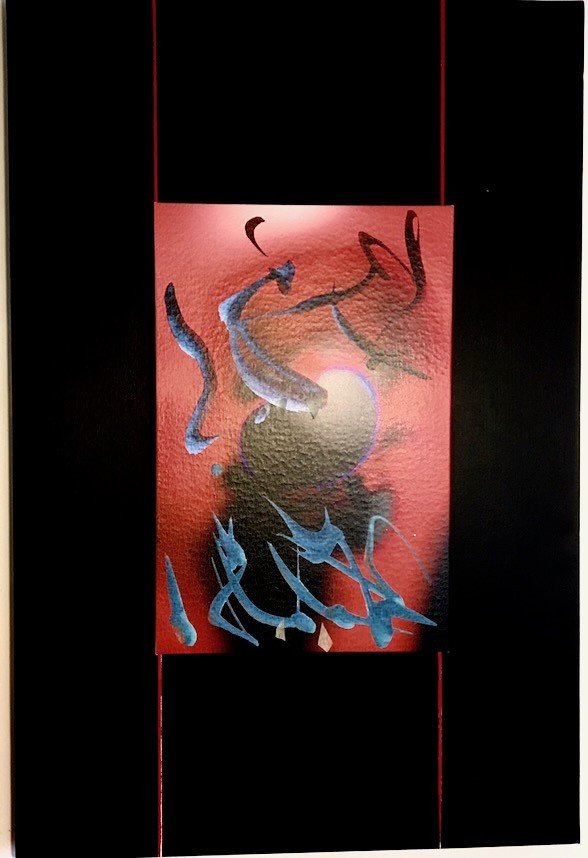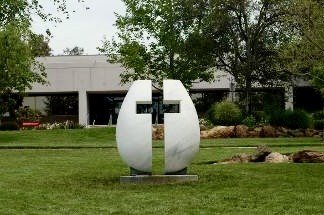Alexander – Reaction to the Seoul Art Scene 1991
A Conversation with Alexander
After having had some discussion with Alexander following the formal unveiling of his “The Cross” sculpture at Oaks Christian Academy in Westlake, CA (2011), I had a pleasant dinner with the artist and his lovely wife, Zhanna, in Santa Monica. At the time, he expressed concern over how challenging it was to gain the attention of a leading gallerist or museum curator regarding an exhibition of his most recent works. He had been intentionally away from the art scene for the past two-and-a-half decades. This extended absence had understandably raised curiosity within the art world. He had his reasons, and he now sought a re-entry. Finding the right venue for his life’s work was a complex process.
A Legacy of Innovation
Alexander had, for the past 25 years, been deeply immersed in the creative process, pursuing what he considered to be “cutting a new edge.” He was working consistently. His main artistic objective had always been to create artworks in a manner distinct from his predecessors. He had little interest in producing variations of existing styles but rather in developing a unique art form that could serve as a potential source of inspiration for others and their creative processes.
Early Career and Artistic Evolution
His early career in England was extensive and well-documented. At the onset, his work was mostly sculptural. A notable transition took place after his move to Australia, where he began exploring 4-dimensional artworks and experiments in holography (i.e., holographic art). He was Australia’s representative artist in 1987 for the 19th Biennale in Sao Paulo, Brazil. This was followed by a solo retrospective exhibition at the Museum de Arte Contemporanea, also in Sao Paulo (1989). He was later an invited honoree at Progetto Leonardo in Milan, Italy, where he was awarded the “Special Grand Prize” for his holographic movie, “The Dream.” Subsequent retrospectives were held at the National Museum of Fine Arts in Chile (Santiago) and the National Art Center Museum in Seoul, Korea (1991), followed by participation in Art Futura in Toronto, Canada (1995).

Photo Courtesy: Alexander
Alexander – Computer assisted artwork 1996.
A Fusion of Science and Art
“I was always interested in science just as I was in art. This allowed me to visualize the development of the process from both a technical and an artistic perspective, working alongside individuals actively and professionally engaged in the science of holography. In my early explorations, my goal was to expand the potential of the medium beyond small, constrained frames, ultimately elevating it into an expressive art form.”
A Posthumous Tribute
Although he passed away in March of 2023 at the age of 96, a major retrospective exhibition of his work is scheduled for the first quarter of 2026 at the newly unveiled (Nov. 2025) 8,000-square-foot VEFA Gallery in Torrance, CA. It will be important for the Curator (Peter Frank) and the Directors of the gallery to consider several aspects that contribute to Alexander’s distinct position within contemporary art:
- His creative approach and commitment to innovation, which make him a unique figure in the varied landscape of contemporary art.
- The way in which he combined scientific exploration with artistic expression, often merging new technologies, such as holography, with established artistic traditions to present ideas and theories.
- His accessible approach to art, which allows viewers to engage with his work in different ways, regardless of their familiarity with artistic theory.
- Since the publication of a monograph about his work in 1993, he continued to produce new pieces in his artistic pursuits.
An Extensive Collection for Exhibition and Sale
There are approximately 450 previously unseen works by the artist available for exhibition and sale in his final inventory. Unlike his earlier large-format transmission holograms, these works are designed for a variety of display spaces, making them accessible to both private collectors and institutions. Their distinctive visual originality may draw interest from a range of contemporary art supporters and institutions invested in progressive artistic expression.

Photo Courtesy: Alexander
Alexander – The Cross Oaks Christian School 2011.
The Artist’s Vision Lives On
Alexander would have likely valued the opportunity to present his body of work to an audience of this scale—one that VEFA appears well-positioned to attract. His retrospective exhibition will offer a broad look at his artistic evolution, from his early sculptural works to his innovative contributions in holography.
Further details regarding the exact dates of this upcoming exhibition can be found by visiting the VEFA website.
Published by Jeremy S.



